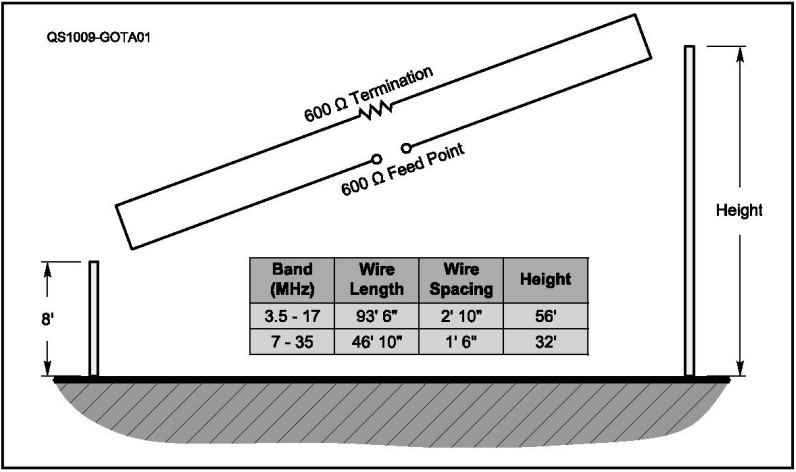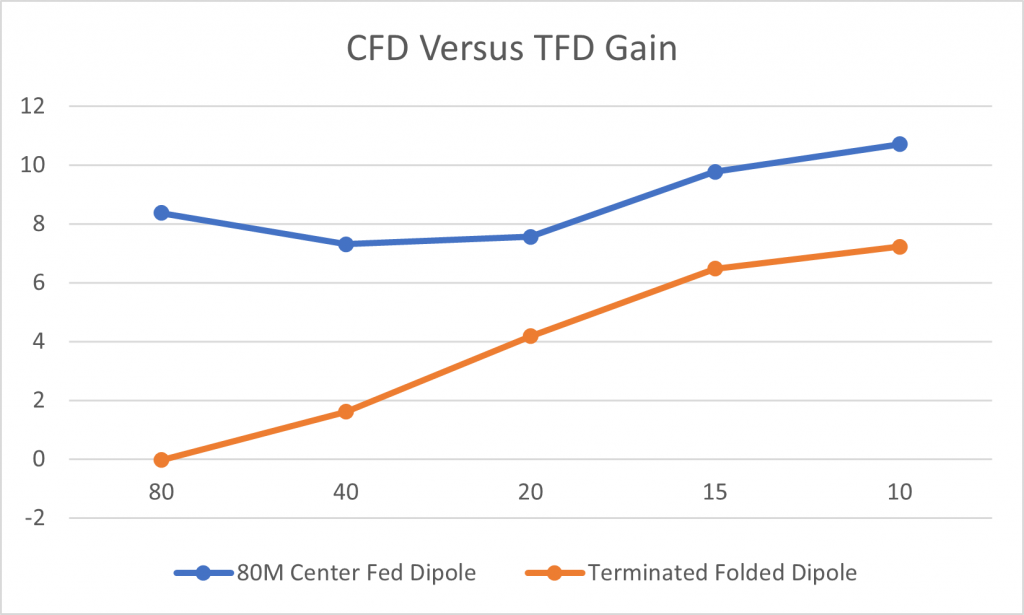After discovering the difficulties of trying to design a resonant multi-band antenna for our last Field Day setup, our coordinator decided that we would have to attempt some simpler design this year. To allow a five-transmitter station to simultaneously operate on multiple bands, each transmitter must have either distant antennas for every band, or each transmitter may be connected to an elaborate filtering system that is in turn connected to a single multiband antenna. Although multiband antennas are quite prevalent today, creating one that has a low SWR over several bands is quite difficult. While most casual hams would utilize either the built in “trimming” tuner in their radio or a wide-range external tuner to touch up the impedance that the transmitter sees, such a configuration is not acceptable in conjunction with the triplexers and bandpass filters that we plan to use for our Field Day setup. Since antenna tuners alter the resonance of the filtering, they cannot be used to touch up the resonance of our antenna system. Therefore, the design criteria for this antenna is to have an SWR below 2:1 on all contest bands 80-10 meters on all portions of each band.
While consideration was given to OCF (Off Center Fed) Dipoles, trapped dipoles, and other popular multiband antenna designs, none consistently give a low enough SWR over all of the necessary spectrum. Although most antenna designs do not fit the given SWR specifications, the TFD (Terminated Folded Dipole) does.

The Terminated Folded Dipole was first introduced by Countryman in an article in 1949 QST. While the original design used a 600 ohm resistor and a 12:1 impedance converter, modern testing has shown that an 880 ohm resistor and a 16:1 balun perform better.
Of course, we all learned when studying for our technician’s license that a dummy load has an incredibly low SWR over all frequencies – in fact, the SWR should be 1:1 if the dummy load is correctly configured. This resistor terminated antenna design takes the best of both worlds by inserting an 880-ohm resistor in the long leg of the folded dipole antenna, creating a low SWR over the entire spectrum while the rest of the antenna continues to radiate some of the RF energy. Of course, the resistor burns up quite a bit of the energy, but how significant is that lost power? While running a number of tests using antenna modeling software, I discovered that the lower bands, particularly 80 meters, had far too much power getting lost in the resistor. After running a few more tests, I realized that since the traditional TFD design is only 93.5 feet long, more transmit power was getting burned up the resistor since the antenna was not an entire half wavelength on 80 meters (132 feet). As I increased the length of the modeled antenna, I was able to observe the gain figures on 80 meters improving, but the SWR fluctuated back and forth and never stayed below 2:1 on all of the HF bands. While watching the SWR figures on all the bands that we use for Field Day (all HF bands except the WARC bands), I continued to increase the length until the dipole was 140 feet long. The final TFD design ended up having an SWR below 1.75:1 on all of the HF contest bands, and it even had acceptable gain figures on 80 meters.

As can be seen in the graph, the gain difference varies from 8 dB on 80 meters to under 2 dB on 15 meters.
A famous contester once stated that an operator gets a 6% increase in their contest score for each dB of signal improvement. On 80 meters, the gain difference is about an S-unit, which means that a contest operator would see a 48% increase in score if they switched from a TFD to a traditional dipole. While I would not accept this level of compromise for general use in my own station, I believe that the loss presented is quite acceptable considering the restrictions that our inter-station filtering imposes on our antenna options. Our club Field Day is by no means competitive, and after all, “Field Day isn’t a contest!” While this “dummy load” antenna is a compromise as all antennas are, the performance is certainly acceptable for our traditionally food-focused Field Day!

